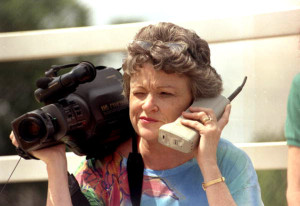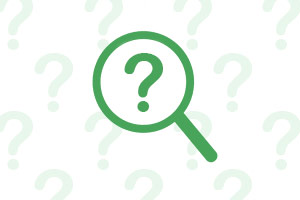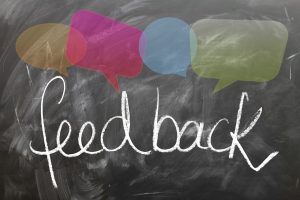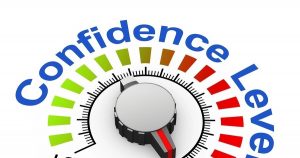
Social is inevitable, resistance to technology adoption is futile, and as soon as Millennials become a dominant generation in the workforce, we too will be permanently attached to our video-enabled network-connected smartphone, if we’re not already.
However, in the meantime, we have revenue to generate and we’re struggling to demonstrate real ROI in terms of dollars and sense.
- As a Marketer, I get it. There is value in social branding, engagement and messaging for customer loyalty and advocacy. However, the C-suite is getting impatient because Social Marketing is not helping enough to pay this week’s payroll.
- As a Sales Professional, I get it. Where’s the beef? How does all this social marketing stuff help you directly achieve this month’s quota, this quarter’s quota, and this year’s quota? Your management even thinks Social Sales is a distraction to making the number, let alone social marketing.
Imagine if Sales could use all the Social Marketing messages to actually close deals.
Imagine if Marketing could point to their Sales Enablement activity, and the extra sales that social marketing directly helped produce, to demonstrate Social Marketing ROI.
More importantly, image this from the buyer’s perspective: customer experience. Instead of receiving confusing and sometimes conflicting information from various company Marketing sources and Sales sources, the customer would be receiving a consistent buyer experience throughout their purchasing journey. A journey that results in a buyer becoming a new customer, then a repeat customer, and then a company advocate/champion/reference.
So how can we improve customer experience with social sales and social marketing?
The Buyer Purchasing Journey (And The Gap between Marketing and Sales)
The buyer is self-educating online. Even if a Sales representative is able to interact with the buyer early in their purchasing process, and start influencing the destination of their buyer’s journey, the buyer would still be self-educating throughout the process.
With or without sales and marketing automation, there are not enough Sales reps to chase every possible early prospect, nor could the company’s budget accommodate such an investment.
The buyer is consuming the content they want, from the sources they want, whenever they want, from their smartphone or PC. Some of the messaging may come from competitors, some of it from partners, some of it from existing and former customers, some of it from somewhere within our own company. Who knows what kind of online information that a Sales rep will need to respond during their first customer meeting?
It doesn’t make sense for Sales to monitor what’s happening online (or, what’s happening in the press, at trade events, or with industry analysts). Marketing is already monitoring that information; the company shouldn’t have to duplicate effort and expense.
So how can Marketing or Sales create a better customer experience?
Marketing’s expertise is one-to-many communication, historically using whatever broadcasting medium was available to brand, engage, and message: tradeshows and events, public relations, analyst relations, print and digital advertising, direct marketing, email marketing, content marketing, search engine marketing, etc.
- Marketing staff really have not interacted with buyers first-hand to understand what really happens within a company’s purchasing process.
- Teaching Marketers how to manage a sales process might help them understand the kind of messaging buyers find professionally compelling during their purchasing journey, but distracts them from maximizing Marketing ROI. They are already struggling to manage the myriad marketing techniques and technologies that is needed to communicate to the self-educating buyer.
Sales expertise is one-to-one communication, historically on one-to-one platforms such as face-to-face meetings, telephone calls, and email.
- Sales people have generally not been trained or supported to publish an article or comment online about the company or products, nor have they been authorized by the company to do so. The internet is an unforgiving place for the untrained and inexperienced, where it’s very difficult to erase a poorly worded comment or ill advised pic.
- Teaching Sales Representatives how to become better marketers, in order to broadcast their own blog posts and messages online, just reduces their available time to actually sell. The last thing they need as they struggle to make quota is less time interacting with a potential customer.
Sales and Marketing Collaboration (and The Customer Experience)
Both Marketing and Sales must get on the same page by embracing the complete buyer purchasing journey, not just a piece of it, if the company really wants to improve the customer experience.
This means both Marketing and Sales must understand the real buyer purchasing stages and determine how they can facilitate that complete buyer journey so that it produces revenue for the company, sooner rather than later: who is the buyer persona that is consuming information, what specific questions and concerns do they need answered before moving to the next purchasing process stage, what webpage or document provides that information?
This means Marketing must step up; go beyond just branding and engagement messaging, and start understanding and facilitating the buyer journey.
- To go beyond just labeling a lead as TOFU, MOFU or BOFU, and start understanding exactly where the buyer is throughout their journey by helping the buyer self-qualify. This will help also improve the effectiveness of marketing automation.
- To go beyond just focusing on the type of content consumed (posts, case studies, research study, analyst report, etc), and focus more on the specific information that was consumed, and start understanding where the persona is in their purchase journey. Did the buyer consume information to help understand several industry challenges within the Finance industry? Did they consume information about the various solution approaches that the industry is considering to specifically address the Dodd Frank regulation challenge to the Finance industry? Did they consume information on what specific legal services would be the best type of solution to solve their concerns regarding Dodd Frank? Did they consume information about your company’s legal services to address Dodd Frank regulation in the Financial Services industry? Did they consume information related to choosing the best legal services firm to solve their Dodd Frank challenge?
This also means Sales must step up; go beyond just pitching product to see what sticks, and start to position themselves as a trusted advisor.
- To go beyond just slideshows and meetings, and start adding valuable insight to help the buyer understand their challenges, options, risks, and outcomes.
- To go beyond sending whatever content was available at the time in a poor attempt to stay top of mind with the buyer, and start sharing content that will help the buyer move to the next step in their purchasing journey.
It won’t happen overnight and will be to be an evolution. That’s okay, because the buyer journey is also continually evolving.
Social Sales and Social Marketing
Social Marketing is a mash up of marketing expertise related to public relations, content marketing, digital advertising, brand messaging and marketing analytic tracking, specifically applied to social media platforms. Most Social Marketing today simply tries to brand, engage and collect likes, follows, shares, and re-tweets. For example:
- distribute compelling blog posts (yep, blogs are considered social)
- advertise and promote content on various social platforms
- share content on various social accounts
Social Selling is a new skill that’s used as part of a complete strategic selling framework. Most social selling today simply improves upon standard prospecting techniques, prospect research, and turning cold calls into “warm calls”. For example:
- the social profile becomes a “social business card” to describe what value the sales person can offer a prospect (although most reps still use it primarily as a place to put their resume);
- the social connections become a dynamic rolodex of prospects and their connections, facilitating introductions and referrals into targeted accounts (although many reps just use it as a way to send pitches to potential product prospects, who usually consider it irrelevant content/spam);
- the social platform becomes a network where sales rep can quickly conduct prospecting research about the company and the contact (although many reps just use it to find out something quick about the company before calling a prospect, who quickly sees that the sales rep had access to company information but chose not to learn anything meaningful about their company before calling).
If Marketing and Sales could agree to focus on the buyer to facilitate their journey, we’d be able to take social sales and marketing to a new level.
- Marketing would be sending more relevant messages to the target buyer market. Some of those messages would be branding and engagement oriented, while an increasing number of messages would be designed to facilitate the buyer journey, and sales could be tracked to prove ROI.
- Sales would be able to send the same relevant messages to their individual prospects. Most of the content they would use would align to where the buyer was in their purchasing journey, but some of it would be branding and engagement messages, and the rep could keep the sales process moving forward towards a sale.
- Marketing and Sales could start their collaboration by teaming up to get the most out of one social platform (to begin with) such as LinkedIn: to leverage Navigator, Groups, Pulse, third party analytics and more to maximize ROI and revenues, for the benefit of both Marketing and Sales functions.
Most importantly, the customer experience would be greatly improved if Marketing and Sales could start collaborating. Regardless whether a prospect was uncovered by Marketing or by Sales, the prospect would ultimately be receiving consistent, compelling, and helpful information that would result in company revenues, sooner rather than later.
If Marketing and Sales can start collaborating on impacting the buyer purchasing journey, rather than trying to collaborate on when a MOFU equals a SAL, it would be a much more productive experience for all concerned, particularly the customer. See the following Business 2 Community articles for additional insight:
- Creating The Best Marketing Leads
- Creating the Best New Logo Sales Leads
- The Small Medium Business Advantage: Sales and Marketing
- The Buyer Journey: Content Marketing Versus Sales Enablement
It’s time for Marketing and Sales to stop being “anti-Social” with each other and start collaborating on Social interaction with the customer. Consider getting an experienced Marketing and Sales leader/consultant to help negotiate a détente and start collaborating on what should be our highest common priority: the new self-educating customer.
How will you make collaboration a reality? Please keep the discussion going by commenting and sharing this post with your colleagues.
Image “Journalist Lucy Morgan with video camera and phone” by Florida Memory on Flickr licensed under CC BY 2.0
(322)










